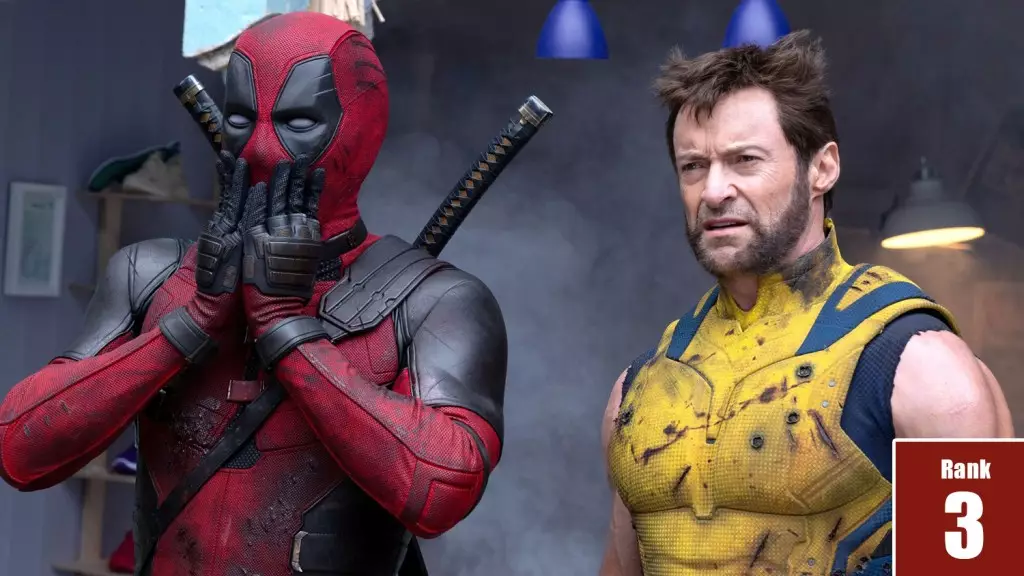In the fast-paced world of blockbuster cinema, the release schedules of major films often play a pivotal role in their success. The prolonged absence of “Deadpool”—a character that audiences had grown to love—created a ferocious appetite for the franchise’s return. Disney/Marvel’s decision to hold off on releasing the R-rated “Deadpool & Wolverine” undoubtedly heightened anticipation. This method of generating buzz is not just effective; it is essential in creating a film that outperforms expectations. It’s akin to how regional cooking competitions captivate audiences—absence not only heightens longing but also allows for a more robust comeback.
In an era of constant content, allowing certain franchises to breathe can reinvigorate interest. High-profile returns from iconic characters are akin to a rare vintage wine—appreciated more when savored slowly. The trajectory of “Deadpool & Wolverine” effectively illustrates this principle, proving that strategic timing can lead to enormous box office success.
Shaking Off the Superhero Fatigue
After years of superhero films flooding theaters, a certain lethargy began to settle over the genre. Audiences were inundated with formulaic storylines, predictable character arcs, and an over-reliance on CGI. Enter “Deadpool & Wolverine,” a film that revitalizes the tired superhero landscape with its irreverent humor and biting commentary on the genre itself. The film is essentially a mirror, reflecting the self-seriousness that has plagued many modern superhero narratives.
By blending elements of buddy comedies with outlandish humor reminiscent of classic films like “Airplane,” the filmmakers captured a refreshing tone that appealed to both die-hard comic fans and those who longed for a break from intense drama. A clever fusion of genres is exactly what was needed to shake audiences out of their superhero fatigue. “Deadpool & Wolverine” serves as both a satire and a celebration of superhero lore, cleverly making fun of itself while still delivering thrilling action.
Star Power and Synergy
The importance of star power in film cannot be overstated. Ryan Reynolds and Hugh Jackman are not just capable actors; they are cultural icons whose chemistry sizzles on-screen. Jackman’s return as Wolverine was not merely a nostalgic callback but a masterstroke in marketing. Imagine the dismay of audiences who believed they’d never see these two characters together again; that sense of thrill was cleverly manipulated throughout the film’s promotional buildup.
Additionally, the film featured a plethora of cameo appearances that brought both nostalgia and curiosity to the forefront. When blockbuster films infuse recognizable faces from various franchises, they tap into an already established fanbase. This house of cards strategy—where the more popular figures bolster less popular ones—works adeptly, ensuring a larger pool of viewers inclined to purchase tickets.
Effective Marketing Strategies
Disney has mastered the intricacies of film marketing, and “Deadpool & Wolverine” was no exception. The use of memorable promotional tactics—including a Super Bowl trailer that became the most-watched for any Marvel title—illustrates an understanding of their audience at its core. Financial investments in marketing were reminiscent of placing bets on a sure thing; expectations ran high from the outset.
Innovative techniques, such as staging a theatrical experience at Comic-Con, allowed fans to connect with the film in immersive ways. Incorporating in-theater experiences, such as special trailers and unique collectible items, effectively elevated audience engagement. In today’s media economy, where advertisements often get drowned out by noise, unique promotional strategies ensure that a film stands apart from its competition.
A Unique Storytelling Approach
At its heart, “Deadpool & Wolverine” represents a shift from typical superhero narratives. The filmmakers skillfully wove a plot that not only entertains but also stimulates dialogue around themes of identity, mortality, and redemption—key topics resonant in today’s cinematic landscape. Through its humor and over-the-top violence, the film embraces absurdity while exploring profound moral dilemmas—a juxtaposition that enriches the viewing experience.
The film isn’t just a tale of spectacle; it compels the audience to think, laugh, and often question the very fabric of superhero storytelling. Such deep layers allow it to rise above mere entertainment, nudging it into the realm of art, where cinema meets commentary.
Financial Success Beyond Initial Box Office
While the opening weekend gross of “Deadpool & Wolverine” set records, it is imperative to recognize the broader financial landscape of filmmaking. The film’s ability to generate substantial profits—thanks in part to merchandising, streaming, and international markets—illustrates the changing dynamics of box office success. It stands as a testament to understanding nuanced data on audience behavior, which traditional studios can no longer ignore.
As streaming continues to grow in influence, measuring film success will evolve beyond mere box office tallies. Films that embrace innovative approaches to storytelling and audience engagement, like “Deadpool & Wolverine,” signal a necessary evolution in the industry—one that must prioritize a deeper understanding of viewer satisfaction over simple financial metrics.

